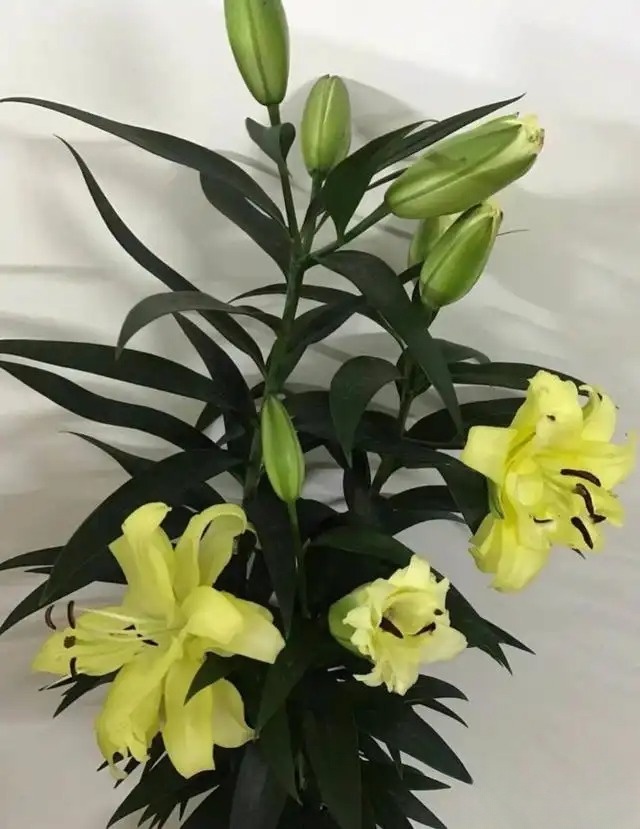When planting lilies in spring, pay attention to these 5 points, and the lilies will grow vigorously and bloom beautifully, filling the house with fragrance.
Text/Snow in the Rain
Introduction: Lily is a bulbous flower of the genus Lilium in the Liliaceae family, also known as Qiangqu, Fanjiu, Shandan, and Daoxian. Lily likes warmth and is relatively cold-resistant, afraid of high temperature and high humidity. The suitable growth temperature is 15-25 degrees. If the temperature is below 10 degrees, the growth will be slow; if the temperature exceeds 30 degrees, the growth will be poor. The bulbs of lilies must be stored at a low temperature of 7-10 degrees for 4-6 weeks before they can differentiate into flower buds.
Lily potted flowers or fresh cut flowers can be used to decorate the home environment. They are suitable for placing in the living room, balcony or windowsill with good air circulation. The rich fragrance makes people feel relaxed and happy. For vase lilies, it is better to choose lilies that are about to bloom and whose flower colors can be seen. Do not choose flowers with closed buds and only green color. Before vase placement, the leaves at the bottom of the flower stem should be trimmed, and the end of the stem should be cut with a knife to make an oblique cut, and the orange stamens should be cut off. This can extend the vase placement time of the flowers by about 2 weeks and the flowers will not be contaminated.
In March, the earth revives, and lily bulbs can be planted from mid-March. If they are old bulbs from last year, pour out the soil in the lily pot together with the lily bulbs, replace with new sterilized soil, mix slow-release fertilizer into the new soil, soak the lily bulbs with diluted carbendazim solution, and then replant the lilies after drying. For bulbs with too many roots, trim off the excess old roots, empty roots, and shriveled roots, and water them thoroughly when planting in pots. Generally, they will sprout again in about 15 days.
So, how to plant the bulbs of potted lilies at home? What issues should be paid attention to when caring for lilies? These are the issues that flower lovers who like lilies need to understand and master. Today, I will share the methods of potted lily bulbs and the relevant matters that need to be paid attention to when caring for and storing lily bulbs. I hope it can provide some reference and help for flower lovers.
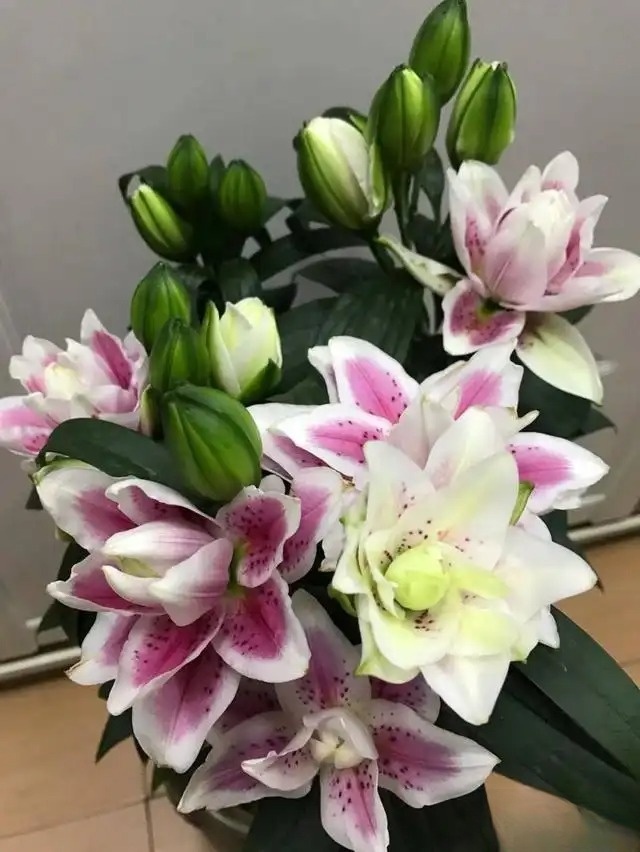
The fragrant lily - Natalia
How to plant lily bulbs in pots?
1) Selection of cultivation soil
Loose, fertile, well-drained sandy loam is the best soil for planting lily bulbs. For home potted plants, you can choose a mixture of 70% peat soil and 30% perlite. You can mix more perlite into the loam to make it more loose, drainable and breathable, and then add a small amount of slow-release fertilizer. The cultivation soil and slow-release fertilizer should be fully mixed.
2) The basin should be deep
Lilies require deep soil and a flowerpot height of at least 15 cm. The size of the flowerpot should be determined according to the number and size of the lily bulbs to be sown. Generally, a 15 cm diameter flowerpot is suitable for planting 2 to 3 bulbs; a 20 cm diameter flowerpot is suitable for planting 3 to 4 bulbs. Lilies should be planted in a higher flowerpot, which can prevent the plant from lodging in the later stage and is conducive to the growth of the lily's root system.
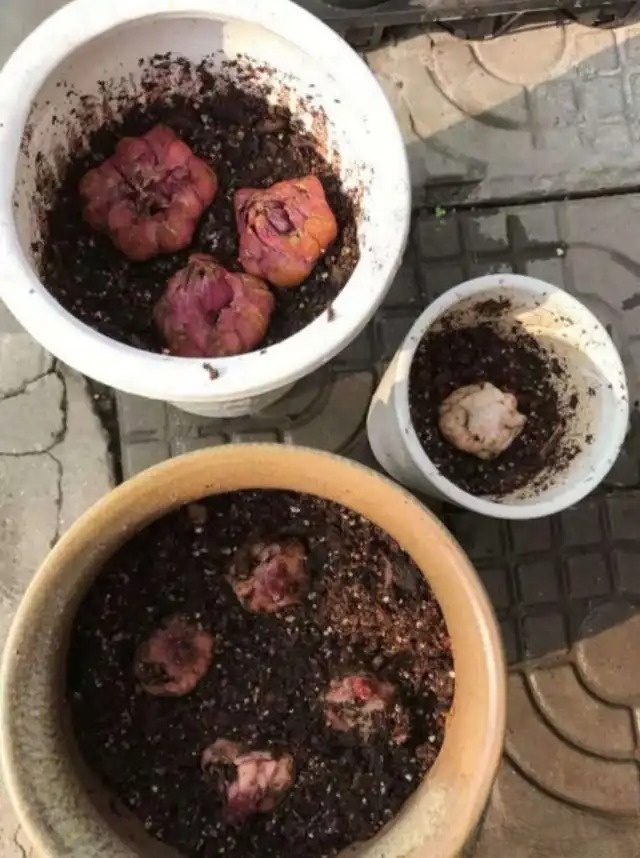
A flowerpot with a diameter of 15 cm can be used to sow 2 to 3 bulbs, and a flowerpot with a diameter of 20 cm can be used to plant 3 to 4 bulbs. It is advisable to cover the bulbs with 10 cm of soil.
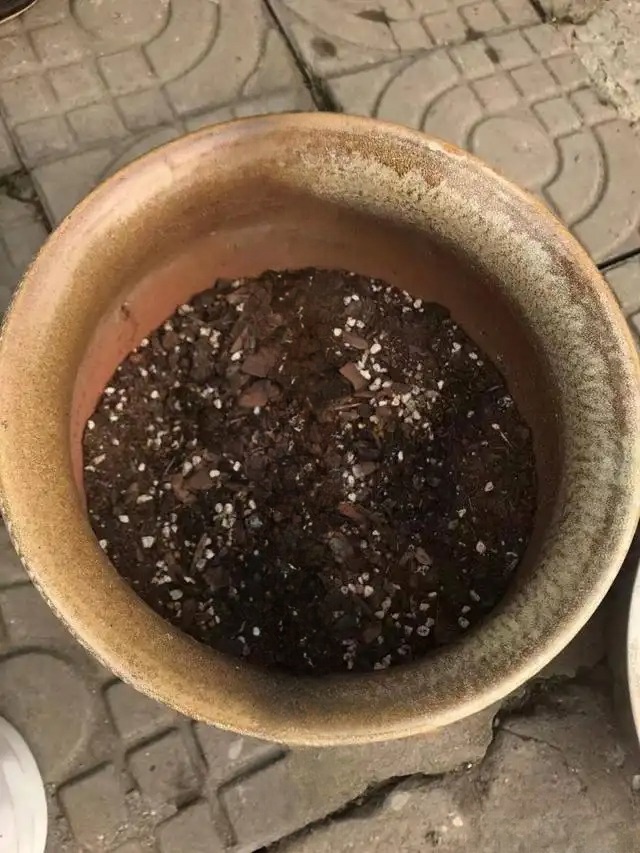
A flower pot with a diameter of 18-20 cm can hold 3-4 bulbs. Put 2/3 of the potting soil in first, then put the bulbs in.
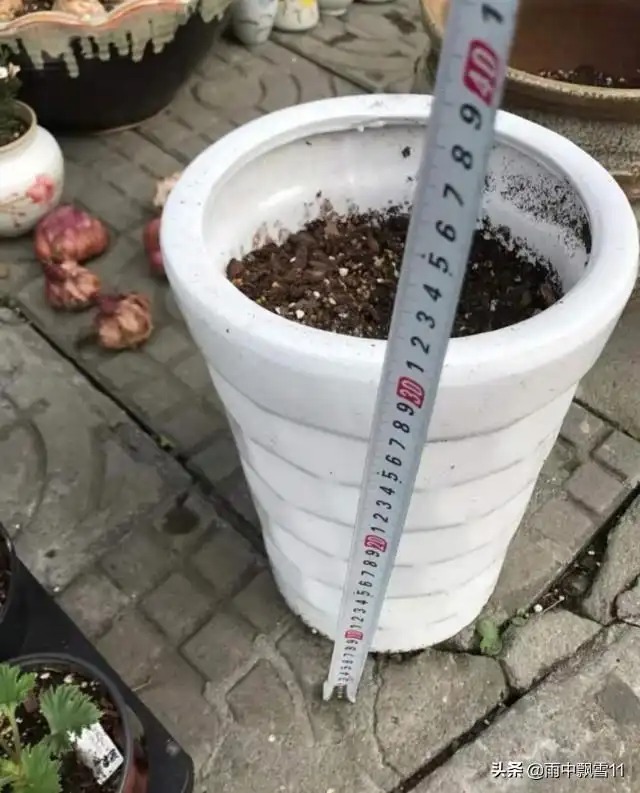
A flowerpot with a diameter of 15 cm can plant 2 to 3 bulbs.
3) Steps for planting bulbs
Before planting, soak the bulbs in a 1:1000 dilution of carbendazim wettable powder for 20-30 minutes, then place them in a cool and ventilated place, dry them and plant them in pots; moisten the planting soil with clean water in advance until the soil is slightly wet and not loose when you pinch it with your hands. Place the bulbs on the surface of the pot soil, with a spacing of about 4-6 cm between each bulb; then cover the bulbs with a layer of fine loam about 10-12 cm thick.
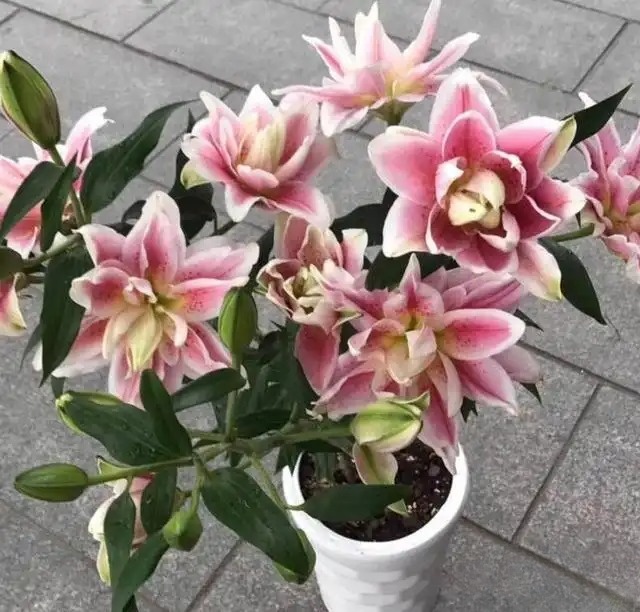
After planting the bulbs, leave a water outlet of about 2 cm in the soil to prevent water from flowing out of the pot when watering.
4) Watering should be done dry rather than wet
After planting, it is important to water the lily bulbs thoroughly with a fine-mouthed watering can and place them in a dark, cool place or shaded place for about 15 to 20 days. For potted lilies, the temperature should be between 15 and 18 degrees for the first two weeks, which is conducive to rooting and germination; for open-field cultivation, a shade net can be pulled up; Note: Whether it is potted or open-field cultivation, when the lily buds appear, the lily should be exposed to sunlight immediately, otherwise it will affect the number of lily buds and the quality of the blooms.
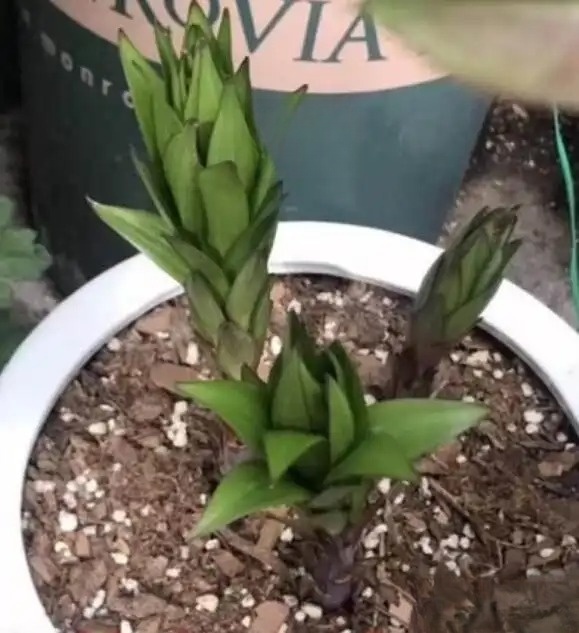
After the lily bulbs sprout, they need sufficient light, otherwise they will turn yellow and it will be difficult for flower buds to appear.
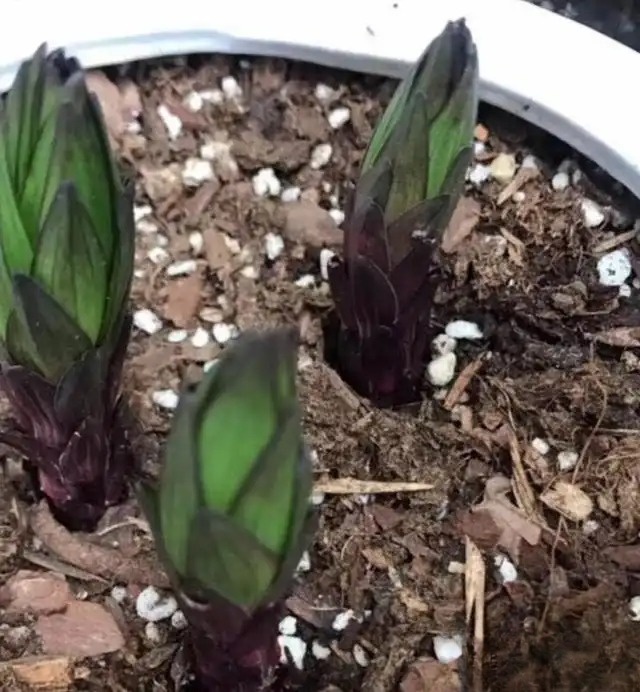
Lily bulbs will sprout 15 to 20 days after planting. At this time, they should be exposed to direct sunlight, and the daily light duration should not be less than 3 hours.
5) Adequate supply of fertilizers is required
During the growth period, thin fertilizers should be applied frequently to help thicken the stems. During the growth period, thin fertilizers should be applied 2 to 3 times. When the buds are forming and flowering, 1 to 2 times of phosphorus and potassium fertilizers should be applied. For example, during the seedling stage of lilies, potassium dihydrogen phosphate flower-promoting fertilizers and Meroke flower fertilizers should be applied to promote the expansion of flower buds, make the flowers more colorful, and make the fragrance more intense.
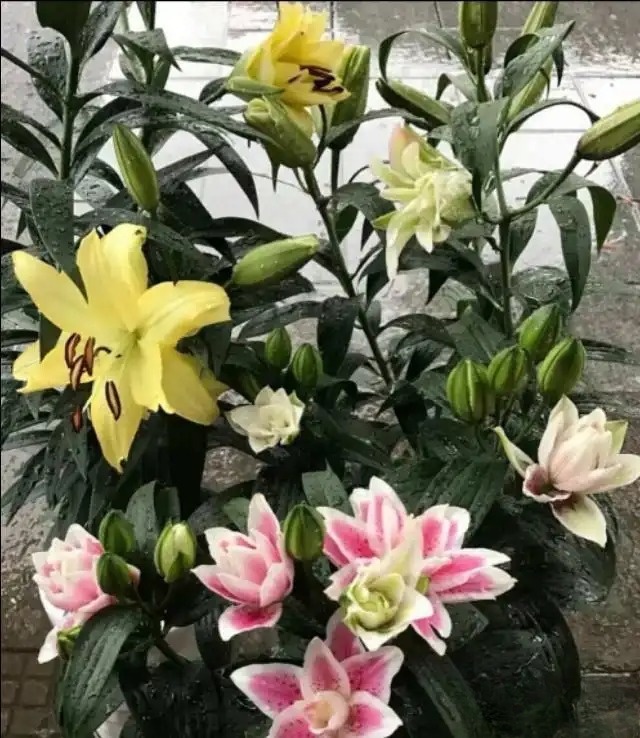
Things to note when planting lilies:
1) The bulbs must be buried more than 10 cm deep, and never buried too shallowly. Otherwise, when the plant grows to 30 cm high, it is very easy to fall over, and it is also not conducive to its roots extending into the soil, which will have an adverse effect on the subsequent maintenance and management.
2) The cultivation soil should be fertile and loose with good air permeability; there should be sufficient base fertilizer, such as well-rotted poultry manure, sheep dung, cow dung, horse dung, etc., which can be placed at the bottom of the flowerpot as base fertilizer, but remember to make sure it is completely decomposed to prevent the undecomposed poultry manure from fermenting again in the potting soil and generating heat, which can cause root burns and damage to the bulbs.
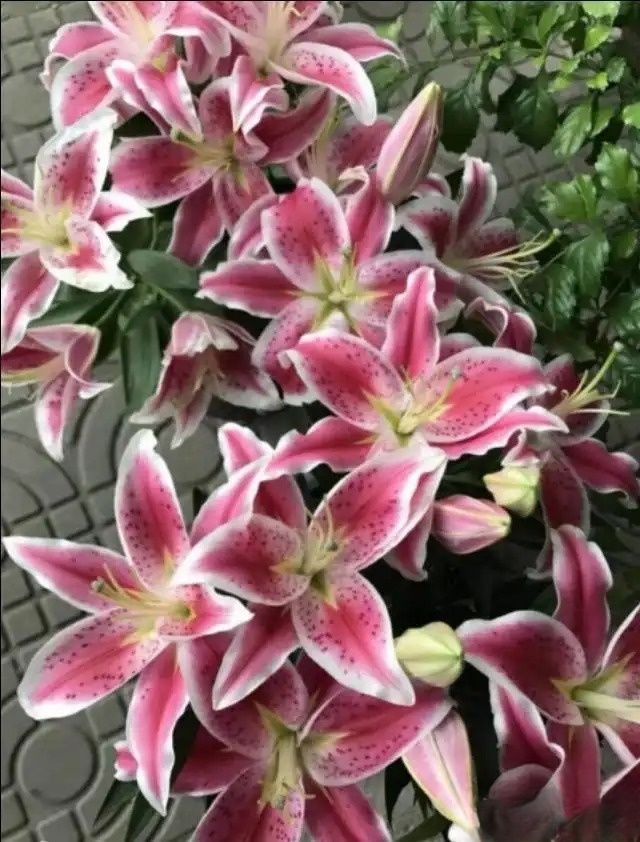
3) In the southern region, if lilies are planted outdoors in the courtyard, the lily bulbs planted in the courtyard do not need to be dug out and preserved; if the bulbs are dug out and stored, remember not to place the bulbs in an environment above 35 degrees, otherwise the lily bulbs will develop into deformities and the lilies will not bloom.
4) Note: Lilies must not be topped or pinched, otherwise no buds will be born and no flowers will bloom. The bulbs can still sprout and bloom the next year; if the lilies do not bulb, they can continue to be maintained in the original pot and bulbed and planted next spring. If it is rainy, be sure not to let too much rain water in the pot to avoid water accumulation in the pot and rot the bulbs. The rain water should be poured out in time.
5) Lily bulbs can only be sown once a year, usually around early March in spring, and will bloom in May or June in early summer; and they can only bloom once a year; they should also be planted in spring of the following year; if planted in autumn, the bulbs need to be subjected to low-temperature vernalization treatment for about 4 to 6 weeks before they can bloom normally, otherwise the lilies will not bud and bloom.
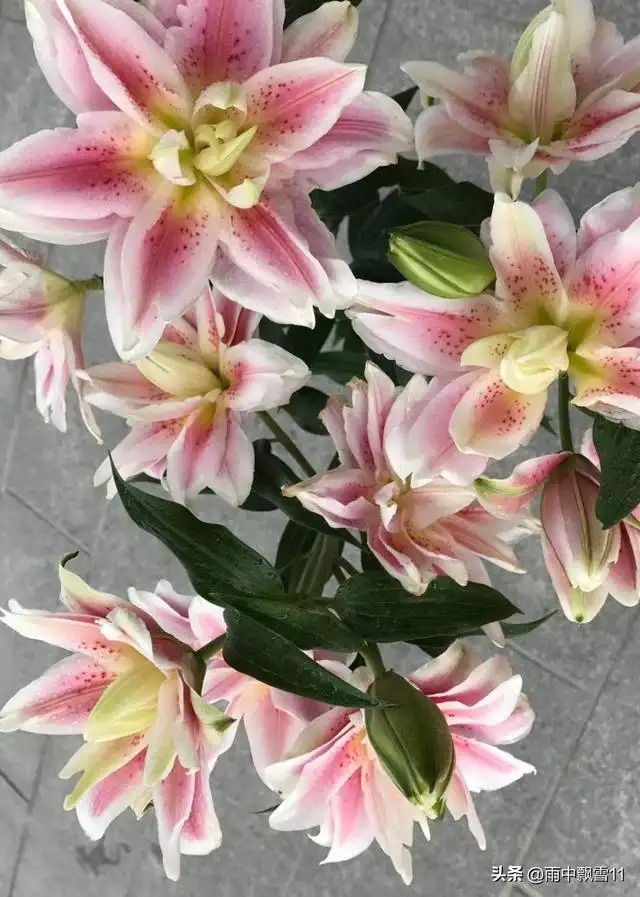
Storage method of lily after withering:
Lilies will enter a dormant state in summer. When the aboveground part has turned yellow, you can dig out the bulbs in the soil, separate the baby bulbs from the mother bulbs, and plant the small bulbs separately. Stop watering 15 to 20 days before digging out the bulbs. After digging them out of the potting soil, place the bulbs in a cool and ventilated place for 1 day, then mix the bulbs with chlorothalonil powder, dry them in the sun, wrap them with clean paper, and store them in a ventilated, dry, and cool place.
If conditions permit, you can store them in a constant temperature box at about 15 degrees. This way, the bulbs will be better preserved, and the flower buds can also differentiate and develop normally. The lily bulbs can also be left undigged from the soil. After the flowers fade, cut off the branches and stems on the ground and continue to nurture them. They will sprout and bloom in the spring of the following year. Although this method saves time and effort, the disadvantage is that it will cause some bulbs to have incomplete differentiation and development of flower buds, and the flowers will not be large enough or beautiful enough in the second year.
